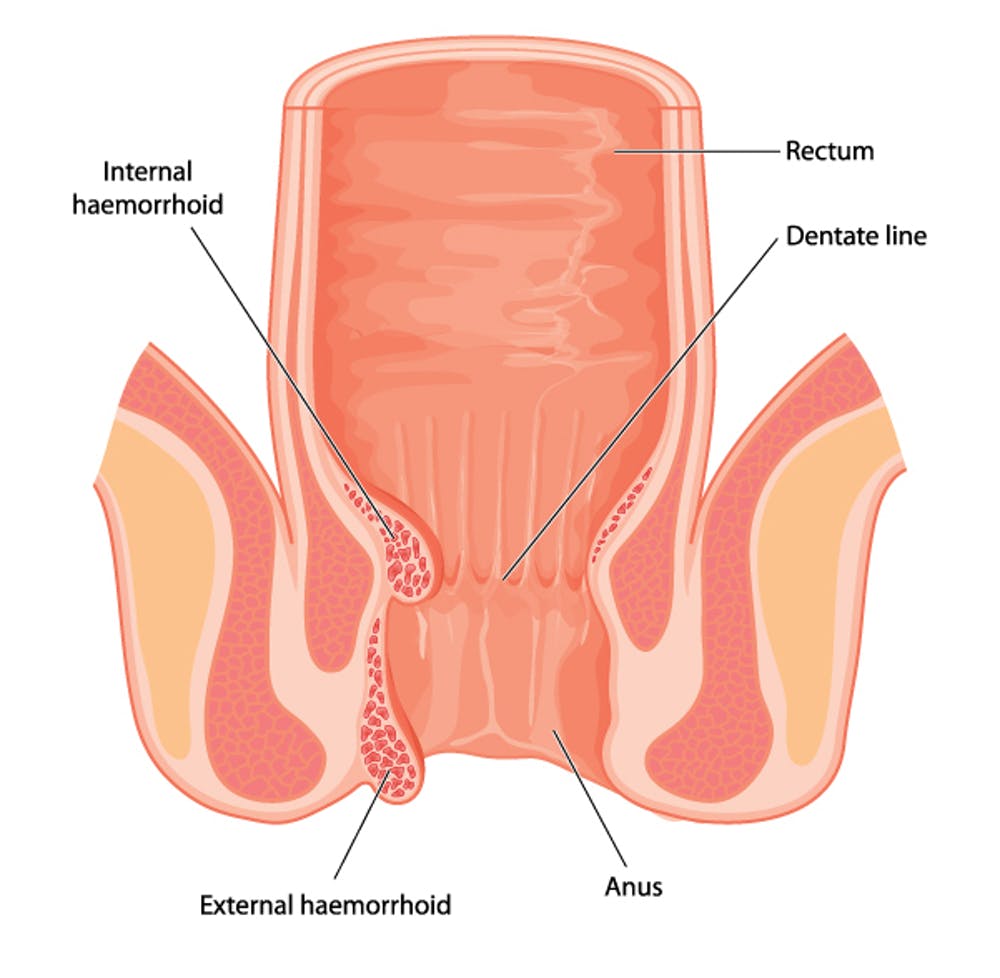Anal canal is surrounded by a muscular structure called the ‘sphincter’. This help in maintaining the control of the passage of stools(solid or liquid state) and gas – Continence. Lower anal canal is lined by a spongy tissue called anal cushions. These help in maintaining continence to gas and liquid stool.
Piles are structurally defective anal cushions. There is a rich network of blood vessels within these anal cushions. With piles or haemorrhoids these will get dilate and can easily bleed. Normally the bleeding is bright red in color. One may feel the haemorrhoids as a fullness at the edge of the anal canal. As the condition gets worsened the anal cushions can get pushed out of the anal canal and may feel as distinct lumps that come out of anal canal at the end of defaecation. There are 4 stages described according to the severity of the disease.
Initially there is only rectal bleeding. This can happen either before the beginning of defaecation or at the end. Normally the blood is fresh and bright red in color. It may trickle as drops or might spray the toilet bowl in high pressure. The anal lumps will come out at defaecation and will reduce back initially; but may remain outside and may need to be pushed in manually as time goes. The anal lumps will remain outside and can progress to cause bleeding, discomfort, itching and discharge of mucous as the condition worsened. This advanced stage can get complicated with infection and ulceration.
The diagnosis of haemorrhoids has to be done with proper examination of the rectum with at least a proctoscopy or an anoscopy. However there are other conditions which can coexist with piles and can only be ruled out by having at least a camera test called ‘flexible sigmoidoscopy ‘ and still better to have a ‘colonoscopy’.
Piles can be treated by injecting an sclerosing agent called phenol, application of special type of rubber bands or with operations.
You may reduce the possibility of getting piles by increasing exercises, increasing intake of liquids and foods with more fiber to avoid constipation. Lifestyle modifications like reduction of time spending in the toilet, avoidance of straining at stools, avoidance of reading at the loo will help in reducing precipitating or progress of piles.
